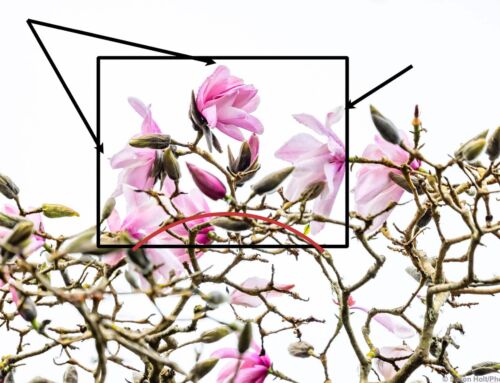I love the moody single point of focus shots in macro photography. They artfully take advantage of narrow focus, emphasizing one detail; but I also love botanic illustrations that are completely sharp, as if drawn by an illustrator.
Manual camera settings allow for greater depth of field, using a small lens aperture, but for close-ups it is never as deep as I want. And using a small aperture means a slower shutter speed – and that means the real possibility of wind moving the flower during long exposures. Solution for getting a lot of depth of field ? Focus stack.
For many of my PhotoBotanic illustrations I want sharp focus front to back, so I often use a technique that merges multiple photos of the exact same composition, each with a slightly different focus points. This is a recent series from a California wildflower I grow – Gilia capitata.
I use a program called Zerene Stacker that merges the images. I will cover this in detail in the next eBook Camera and Computer.
Essentially each frame has a very narrow, tack sharp point of focus. Stacking them on top of each other and using software algorithms to combine all the sharp areas, a final image is created that is in focus from to back.
There are often rough edges and I am still learning these techniques but I feel like an alchemist. Great fun, very satisfying to play with magic.
Find in depth descriptions of photo illustrations in the Plants Celebrated section of the Learning Center. Membership is free. Join us.











Leave A Comment